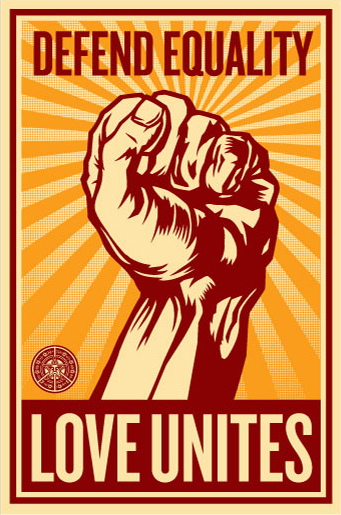Among my fondest childhood memories is savoring a strip of perfectly cooked bacon that had just been dragged through a puddle of maple syrup. It was an illicit pleasure; varnishing the fatty, salty, smoky bacon with sweet arboreal sap felt taboo. How could such simple ingredients produce such riotous flavors?
That was then. Today, you don't need to tax yourself applying syrup to bacon -- McDonald's does it for you with the McGriddle. It conveniently takes an egg, American cheese and pork and nestles it between pancakelike biscuits suffused with genuine fake-maple-syrup flavor.
The McGriddle is just one moment in an era of extreme food combinations -- a moment in which bacon plays a starring role, from high cuisine to low.
There is: bacon ice cream; bacon-infused vodka; deep-fried bacon; chocolate-dipped bacon; bacon-wrapped hot dogs filled with cheese (which are fried, then battered and fried again); brioche bread pudding smothered in bacon sauce; hard-boiled eggs coated in mayonnaise encased in bacon -- called, appropriately, the "heart attack snack"; bacon salt; bacon doughnuts, cupcakes and cookies; bacon mints; "baconnaise," which Jon Stewart described as "for people who want to get heart disease but [are] too lazy to actually make bacon"; Wendy's "Baconnator" -- six strips of bacon mounded atop a half-pound cheeseburger -- which sold 25 million in its first eight weeks; and the outlandish bacon explosion -- a barbecued meat brick composed of 2 pounds of bacon wrapped around 2 pounds of sausage.
It's easy to dismiss this gonzo gastronomy as typical American excess best followed with a Lipitor chaser. Behind the proliferation of bacon offerings, however, is a confluence of government policy, factory farming, the boom in fast food and manipulation of consumer taste that has turned bacon into a weapon of mass destruction.
While bacon's harmful effects were once limited to individual consumers, its production in vast porcine cities has become an environmental disaster. The system of industrialized hog (and beef and poultry) farming that has developed over the last 40 years turns out to be ideal for breeding novel strains of deadly pathogens, such as the current pandemic of swine flu. If a new killer virus appears, like the Spanish flu that killed tens of millions after World War I, factory farms will have played a central role in its genesis.
Concentrated animal feeding operations (CAFOs) churn out cheap, but flavorless, meat. However, for the CAFOs to exist there must be demand for the product. That's where the industrial food sector comes in. Chains like McDonald's, Chili's, Taco Bell, Applebee's and Pizza Hut approach the tasteless, limp factory beef, pork and chicken as a blank canvas with which to create highly enticing, even addictive, foods by pumping it full of fat, salt, sugar and chemical flavorings.
The chains lard on bacon in particular as a high-profit method of adding an item that has a "high flavor profile," a "one-of-a-kind product that has no taste substitute." According to David Kessler, author ofThe End of Overeating, a standard joke in the restaurant chain industry goes, "When in doubt, throw cheese and bacon on it."
More than that, notes Kessler, the food industry uses science and marketing to try to make its products addictive. By manipulating what he calls the "three points of the compass" -- fat, sugar and salt -- the food industry creates highly processed foods that can hook us like drugs. In various countries and regions, the levels of fat, sugar and salt are even calibrated to different "bliss points" to maximize the consumers' pleasure.
Kessler talks to one scientist who studied lab mice that were willing to work nearly as hard to get doses of Ensure, a drink high in fat and sugar, as they were to get hits of cocaine. One food company executive calls his industry "the manipulator of the consumers' minds and desires."
In essence, the food industry has hit on a magic formula: Companies conjure up endless variations on the McGriddle that itself is the mass-produced version of the maple-syrup-soaked bacon strip from our childhoods.
This points to why our food system is so entrenched and why noble experiments, from food co-ops and community-supported agriculture to organic food and the locavore movement, are fleas on the industrial food elephant.
The crisis of factory farming has thus become its own solution. We know our food system is killing the planet, killing us with heart disease, diabetes and cancer and threatens to incubate a deadly global pandemic, but how can we resist when it tastes oh so good?
How CAFOS Were Created
Our current food system has its roots in the Dust Bowl and the Great Depression. With thousands of farming families fleeing the land, the Roosevelt administration dispensed credit and established price supports to stabilize the agricultural sector.
The policy worked, but it inadvertently created large grain surpluses. The problem of surpluses was temporarily alleviated by the demand created by the total mobilization of the nation during World War II. But after the war, the question of what to do with the excess product became more pressing.
The answer was to dump the surpluses, first on a devastated Europe, then during the Korean War and finally, as "humanitarian aid" to Third World countries. U.S. policy evolved to protect a national export-oriented agricultural sector.
In the name of national food security, the U.S. government subsidized farmers to produce more food than Americans could eat and to dump that surplus as a weapon in the Cold War. This policy favored economy of scale and technological innovation to increase yields, because managing overproduction was more effective if the farm sector was reduced and subsidies aimed at large-scale monoculture producers rather than farmers who produced a variety of goods or had small plots of land.
While the U.S. farm population had been shrinking since the late 18th century, when it was 90 percent of the general population, in 1940, on the eve of the U.S. entry into World War II, some 18 percent of Americans were still farmers. This would plummet to 4.6 percent of the population by 1970, because small farmers could not compete with government-subsidized agribusiness.
This agricultural system was exported to developing countries and Europe. In exchange for the right to protect large-scale food production, such as cereals, beef, milk and sugar, the European Economic Community agreed to allow in duty-free soy beans for livestock feed in the 1960s.
French farmer and anti-corporate-globalization campaigner Jose Bove notes that the arrival of U.S. soy beans into French ports signaled the start of agricultural industrialization.
Bove explains: "Cheap soya beans are very useful in intensive breeding, because they make it possible to rear herds in small areas of land close to the delivery ports."
The end result, writes sociologist Philip McMichael, was "a policy to reduce the farm population by 90 percent (eliminating, especially, polyculture and subsistence producers), and establish production quotas, hastening monocultures and farm concentration as a survival tactic."
The Livestock Revolution
It is government policy that allowed CAFOs to come into being. Karl Polanyi argued decades ago in "The Great Transformation" that "laissez-faire was planned." In other words, government regulation of land, labor and finance creates the conditions for free-market capitalism to operate.
The post-WW II period witnessed a series of agricultural revolutions that have been exported around the world, starting in the 1950s with the U.S.-led "Green Revolution" in cereal grains. In the 1970s, the "Livestock Revolution" went global. And the 1980s saw the "Blue Revolution," factory-farming of fish and seafood. Over the past few decades, global meat production has increased by more than 500 percent.
In Fast Food Nation, Eric Schlosser recounts the 1960s rise of Iowa Beef Packers, which revolutionized the beef industry. IBP came into being because it exploit heavily subsidized water, fuel, land and grain for cattle feed; a national transportation infrastructure; and anti-union laws.
IBP's innovation was to combine slaughterhouses with enormous cattle feedlots. In the slaughterhouses, IBP used Fordist production techniques to de-skill meat cutting, paid low wages and busted unions to drive prices down and rake in profits.
Faced with the relentless low-cost competition from IBP, other meatpackers had to adapt or die. By 1971, notes Schlosser, the last Chicago stockyard shut down.
The poultry revolution begins earlier, in the 1940s, but government policies once again play a key role. During WW II, the U.S. government rationed beef and pork, prioritizing them for the troops. Americans on the home front were encouraged to eat chicken, which was freely available, while the government set a price of 30 cents per pound of chicken, "well above the cost of production." The War Department also contracted to buy chicken for soldiers. All these actions spurred demand and supply.
Poultry producers like Tyson Foods, Holly Farms and Perdue Farms seize the opportunity to develop the model of vertical integration. AnAssociated Press report describes how "Tyson Foods embodied a new mode of agriculture that emerged in Southern states after World War II. Chicken companies were the first to absorb all the local pieces of a small-town economy and bring them under one corporate roof. Tyson owned the feed mill, the hatchery and the slaughterhouse. It paid farmers to grow its chicks, using its feed, at a price set by Tyson."
'Excremental Hell'
It is in the 1970s that Smithfield Foods revolutionizes hog production. "What we did in the pork industry is what Perdue and Tyson did in the poultry business," Joseph W. Luter III, chairman and chief executive of Smithfield, told the New York Times in 2000.
According to a Rolling Stone exposé, Smithfield "controls every stage of production, from the moment a hog is born until the day it passes through the slaughterhouse. [It] imposed a new kind of contract on farmers: The company would own the living hogs; the contractors would raise the pigs and be responsible for managing the hog shit and disposing of dead hogs. The system made it impossible for small hog farmers to survive -- those who could not handle thousands and thousands of pigs were driven out of business."
In the 1950s, there were 2.1 million hog farmers, with an average of 31 hogs each. As of 2007, there were 79,000 hog farmers left, averaging over 1,000 hogs each. A single Smithfield subsidiary in Utah holds a half-million hogs and produces more shit every day than all the residents of Manhattan.
Rolling Stone's stunning report describes the lakes of shit that surround pig factories as the color of Pepto Bismol because of the "interactions between the bacteria and blood and afterbirths and stillborn piglets and urine and excrement and chemicals and drugs."
Vegetarians who think they are unaffected by this toxic fecal frappe should think again: The sludge is often used to "fertilize" crops that end up on your table.
Beef, poultry and hog CAFOs could not exist without large-scale environmental devastation. Governments at every level exempt these operations from the laws and regulations covering air pollution, water pollution and solid-waste disposal. They are also largely free from proper bio-surveillance, that is, public monitoring to detect, observe and report on the outbreak of diseases.
Mike Davis, author of The Monster at Our Door, writes that scrutiny of the interface between human and animal diseases is "primitive, often nonexistent" because Smithfield, IBP and Tyson would have to spend money on surveillance and upgrade conditions at their hellish animal factories.
The environmental devastation is epic. In 1999, Hurricane Floyd walloped North Carolina, home to massive Smithfield hog operations.Rolling Stone described how the hurricane "washed 120 million gallons of unsheltered hog waste" -- more than 10 times the size of the Exxon Valdez spill a decade earlier -- "into the Tar, Neuse, Roanoke, Pamlico, New and Cape Fear rivers." After scouring the rivers of aquatic life, the toxic sludge oozed to the Albemarle-Pamlico Sound, one of the most important fish nurseries in the eastern Atlantic.
For Smithfield, razing the environment is just a minor cost of doing business. In Virginia, in 1997 it was slapped with a $12.6 million fine for 6,982 violations of the Clean Water Act. The judge could have hit Smithfield with a $175 million fine. For Smithfield, the smaller fine was like paying half a cent for every dollar in revenue it rang up that year.
Rolling Stone paints a grim picture of what goes on inside a hog CAFO: "Sows are artificially inseminated and fed and delivered of their piglets in cages so small they cannot turn around. Forty fully grown 250-pound male hogs often occupy a pen the size of a tiny apartment. They trample each other to death. There is no sunlight, straw, fresh air or earth. The floors are slatted to allow excrement to fall into a catchment pit under the pens, but many things besides excrement can wind up in the pits: afterbirths, piglets accidentally crushed by their mothers, old batteries, broken bottles of insecticide, antibiotic syringes, stillborn pigs …"
Manufacturing Pandemics
Factory farms are a hot spot for new infectious diseases. According to a former chief of the Centers for Disease Control's Special Pathogens Branch, "Intensive agricultural methods often mean that a single, genetically homogeneous species is raised in a limited area, creating a perfect target for emerging diseases, which proliferate happily among a large number of like animals in close proximity."
A 1998 report prepared for the then British Ministry of Agriculture paints a picture of hog factories as disease factories. "Treatment may be given to sows for metritis, mastitis and for diseases such as erysipelas and leptospirosis. In most indoor herds, antibiotic treatment starts soon after birth. Piglets will receive drugs for enteritis and for respiratory disease."
After weaning, usually at three weeks, piglets "develop post-weaning diarrhea caused by E. coli," which "is quickly followed by a range of other diseases," such as Glasser's disease at 4 weeks, "pleuropneumonia at 6-8 weeks, proliferative enteropathy from 6 weeks and spirochaetal diarrhea and colitis at any time from 6 weeks onward. ... At 8 weeks, the pigs are termed growers and moved to another house. Here they will develop enzootic pneumonia, streptococcal meningitis … and, possibly, swine dysentery. Respiratory disease may cause problems until slaughter."
In his book, Bird Flu, physician Michael Greger writes, "Factory farms are considered such breeding grounds for disease that much of the animals' metabolic energy is spent just staying alive under such filthy, crowded, stressful conditions; normal physiological processes like growth are put on the back burner. Reduced growth rates in such hostile conditions cut into profits, but so would reducing the overcrowding. Antibiotics, then, became another crutch the industry can use to cut corners and cheat nature."
But what happens when a poultry factory is doused with antivirals? According to Greger, "Say there's a one in a billion chance of an influenza virus developing resistance to amantadine [an antiviral drug]. Odds are, any virus we would come in contact with would be sensitive to the drug. But each infected bird poops out more than a billion viruses every day. The rest of their viral colleagues may be killed by the amantadine, but that one resistant strain of virus will be selected to spread and burst forth from the chicken farm, leading to widespread viral resistance and emptying our arsenal against bird flu."
To compound the problem, "the raising of swine is increasingly centralized in huge operations, often adjacent to poultry farms and migratory bird habitats," writes Mike Davis. These operations often abut cities, meaning the "superurbanization of the human population … has been paralleled by an equally dense urbanization of its meat supply." These elements have produced an interspecies blender that is spitting out new viruses at an alarming rate, like the current swine flu bug. The Frankenstein monster that is factory farming is leading to a Frankenstein monster of a deadlier kind.






See more stories tagged with: pork, mike davis, swine flu, factory farming,eric schlosser, bacon, mcgriddle, fast food nation, david kessler, the end of overeating, global pandemics, bird flu, concentrated animal feedi
Arun Gupta is a founding editor of The Indypendent newspaper. He is writing a book on the decline of American empire for Haymarket Books.
Liked this story? Get top stories in your inbox each week from Environment! Sign up now »



















